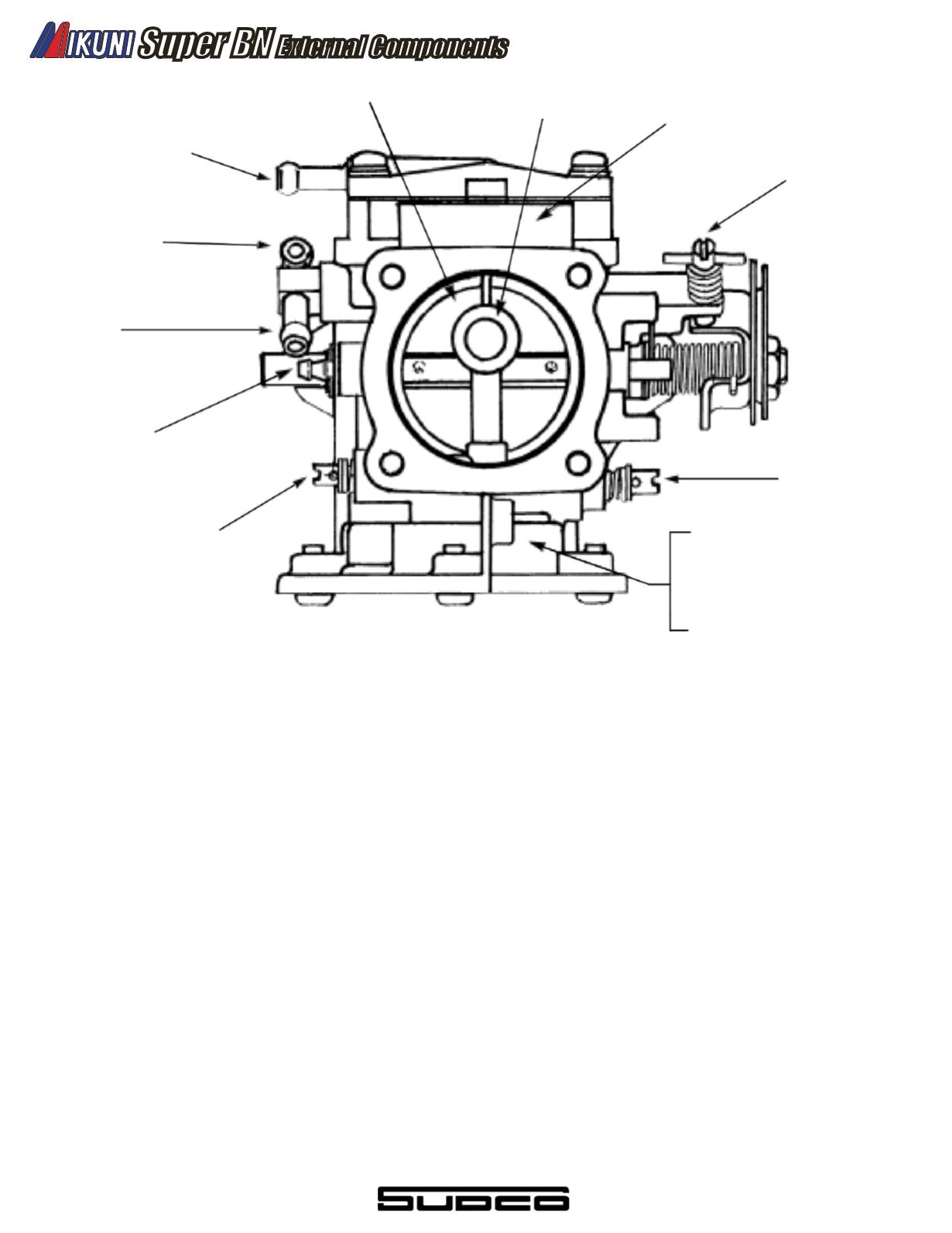

Super BN
External Components
Principles of Carburetion
For Regulator Portion
Because the Super BN is a watercraft carburetor, it cannot vent
its fuel chamber to the atmosphere like a carb with a loat system; this
would cause fuel leakage into the hull in the case of a roll over. The Super
BN’s fuel chamber is contained by the regulator diaphragm, with fuel on
one side and atmospheric pressure on the other.
As the fuel in the chamber is drawn in by engine suction, the
diaphragm moves in response to the depletion of fuel and the effect of
atmospheric pressure pushing against it. The diaphragm contacts and
moves the needle valve arm allowing fresh fuel to enter the fuel chamber.
As fuel enters the fuel chamber it is being pushed in under pressure from
atmospheric pressure. When the fuel chamber is once again illed, the
diaphragm relieves the pressure in the arm and the needle valve closes.
In this way, the diaphragm mechanism precisely regulates the amount of
fuel in the fuel chamber.
Once again, the regulator portion of the Super BN primarily
affects tuning at throttle openings of 1/4 or less in response to the
engines high manifold pressure. The regulator portion of the BN
engine coniguration. The terms most commonly used in this
adjustment is “Pop-Off” pressure.
Pop-off is a relative term,, it refers to the pressurization of the
needle valve with compressed air, through the fuel inlet, and nothing the
pressure necessary to open the needle valve or “pop” it off its
seat. The higher the pressure that is required indicates a higher pop-
off.
For Regulator Portion
The Super BN starts performing like a conventional carbs as the
throttle is opened through and past 1/4 in that is uses replaceable jets and
adjuster screws to make changes in calibration. At or beyond 1/4 throttle
opening, the engine replaces manifold pressure with air velocity.
What is the difference between manifold pressure and air
velocity? Manifold pressure is the suction generated by the engine against
a very restrictive mechanism within the carb: The closed or nearly closed
throttle plate. As the throttle is opened, the carb transition from being
controlled by the regulator portion to responding as a normal carb does.
High air velocity, created by the engine as it revs up, appears as
a strong suction (or low pressure) within the carb body. Fuel low through
the carb is caused by the differential in pressure between the positive
atmospheric pressure on the diaphragm and the suction within the carb
body. Because air velocity creates such a strong suction, pop-off pres-
sure has virtually no affect on calibration past about 1/4 throttle.
552
Outer Venturi
Inner Venturi
Primer Fitting
High Speed Adjuster
Pulse Nipple
Fuel Inlet
Fuel Return
Fuel Pump Assembly
Idle Stop Screw
Low Speed Adjuster
Regular Diaphragm
Arm and Arm Spring
High and Low Speed Jets
Needle Valve Assembly
















